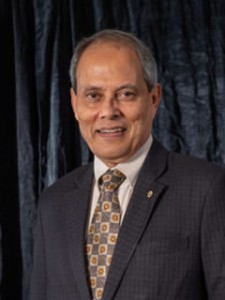Global Electric Power Sector – Engaging with Environmental Issues by Prof Saifur Rahman
 China, US, India, Japan and Russia are the top five countries in terms of electricity generation capacity. Between them they had a total capacity of 3,650 million kW in 2016.
China, US, India, Japan and Russia are the top five countries in terms of electricity generation capacity. Between them they had a total capacity of 3,650 million kW in 2016.
In terms of fuel sources for electricity coal, natural gas, hydro, nuclear, renewables and oil provided 38.3%, 22.9%, 16.3%, 10.2%, 9% and 3.3% respectively in 2017. This means almost two-thirds of the global electricity production came from fossil fuels in that year. This is reflected in about 10 billion tons of CO2 from electricity generation or about a third of the global production. However, this mix is expected to change significantly in the next 10 years.
By 2030 installed power generation capacities from wind, solar PV, hydro power, nuclear and thermal are going to reach 540 GW, 420 GW, 530 GW, 160 GW and 1200 GW respectively.
The top five CO2 emitting countries are: China, United States, India, Russian Federation and Japan each producing between nine and one billion metric tons of CO2 in 2016. However, CO2 is not the only concern against global warming. The Global Warming Potentials (GWP) of greenhouse gases are as follows: CO2 (1), Methane (28), Hydro fluorocarbons (138), Nitrous oxide (265), Per fluorocarbons (6,630) and Sulphur hexafluoride (23,500). So, the bottom line is: Efforts in the electric power sector to replace fossil fuel with renewables and nuclear will help. But if emission from the transportation sector continues to rise, the drop in power sector contributions will not be enough.
Large scale Electric Vehicle deployment will help, but question remains – how will the EV be powered?
About the speaker: Professor Saifur Rahman is the founding director of the Advanced Research Institute at Virginia Tech, USA where he is the Joseph R. Loring professor of electrical and computer engineering. He also directs the Center for Energy and the Global Environment.
He is a Life Fellow of the IEEE and an IEEE Millennium Medal winner. He was the president of the IEEE Power and Energy Society (PES) for 2018 and 2019. He was the founding editor-in-chief of the IEEE Electrification Magazine and the IEEE Transactions on Sustainable Energy. He has published over 140 journal papers and has made over four hundred conference and invited presentations. In 2006 he served on the IEEE Board of Directors as the vice president for publications.
He is a distinguished lecturer for the IEEE Power & Energy Society and has lectured on renewable energy, energy efficiency, smart grid, energy internet, blockchain, IoT sensor integration, etc. in over 30 countries. He is the founder of BEM Controls, LLC, a Virginia (USA)-based software company providing building energy management solutions.
He served as the chair of the US National Science Foundation Advisory Committee for International Science and Engineering from 2010 to 2013. He has conducted several energy efficiency, blockchain and sensor integration projects for Duke Energy, Tokyo Electric Power Company, the US National Science Foundation, the US Department of Defense, the US Department of Energy and the State of Virginia. He has a PhD in electrical engineering from Virginia Tech.


